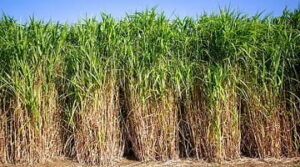UK researchers boost commercial production of Miscanthus grass for biomass

A team, led by senior lecturer in plant biology Dr Richard Webster has produced Miscanthus hybrids to increase seed production of the crop.
“Seed will enable us to upscale Miscanthus planting. This technology is ready, it works, now what we need is more support from the UK government for the biomass sector,” said Webster.
The study, which was published in Industrial Crops and Products, explores methods of reliably producing seed by synchronising the flowering time of leading Miscanthus species to breed viable hybrid varieties.
“The advantage of breeding two species together is that you create hybrids with the best traits from both,” explained Dr Danny Awty-Carroll, postdoctoral research associate at the School.
“As well as developing viable methods for synchronising these species, we have improved seed production and agronomy in the field, in semi-commercial settings,” he added.
Miscanthus is one of the best options for low input bioenergy production in Europe, according to the university. Miscanthus requires significantly less water compared to traditional crops, making it an ideal choice for regions facing water scarcity and drought conditions. Its deep but not destructive root system stores water and reduces flooding.
The results of the study push forward the ability to produce varieties with traits suited to different climates and grow them more effectively, added the organisation.
“Seed is the future. It means we will be able to breed different varieties suited to different locations, soils, and climates,” said Webster.
UK-based Miscanthus specialist Terravesta, is using the methods from the LJMU study to produce seed more effectively, developing varieties with favourable traits for growing at commercial scale in the UK and Europe.
“Terravesta is improving seed development and agronomy, as well as increasing rhizome propagation. Rhizome is also key, as, improving rhizome propagation pulls the seed along. There will always be a need for Miscanthus rhizomes,” concluded Webster.
















